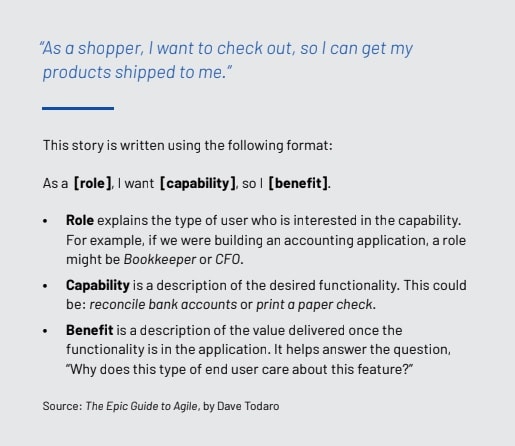Custom software development is not for the faint of heart. Customer needs and preferences, security requirements, and new technology can change on a dime. Your innovation process needs to be able to change just as quickly.
The Scrum framework is an agile software development process that focuses on continuously and sustainably deriving the most business value possible for your organization, regardless of whatever obstacles or opportunities might pop up. With Scrum, that ability to change priorities on short notice is built right into the process.
The work is done by self-organizing, cross-functional teams that work in timed iterations, called sprints. These are typically 1- to 4-week periods – the most popular is 2 weeks — during which a Scrum team completes a functional, fully-tested, shippable increment of a product. As work is completed, it is reviewed and evaluated by the project team and client, through daily builds and end-of-sprint demos in which the team presents the shippable product just completed to the stakeholders.
In a matter of weeks, innovation can go from idea to shippable product, so these sprint reviews give stakeholders an immediate, real-time look at the product being developed. The power to determine how much innovation to prioritize is in the stakeholders’ hands. When a reliable, structured approach to innovation is tied to customer needs and overall business goals, value is increased, making the product and company more relevant in the eyes of the consumer.
This kind of rapid progress requires clear, relevant, and timely communication. With the Scrum framework, you can evaluate the quality of communication by answering three basic questions:
1. Are the right innovators being heard, at the right time?
Innovative ideas can come from almost anywhere and anyone – a team member, leadership, a client, a salesperson, or a client services representative, to name just a few common sources. A product owner on a Scrum team is responsible for gathering essential information and priorities from stakeholders and others to build the best product possible.
2. Are all parties speaking the same language?
Standardizing and clarifying key terms, definitions, and the language used to communicate inside and outside the team reduces the risk of building a product that fails to deliver the features and value that the product owners and stakeholders were expecting.
Instead of writing lengthy, highly detailed software requirements that few will actually read, consider a streamlined approach called user stories. A user story looks at the feature from the user’s perspective and boils it down into a single, short, structured sentence that adheres to the following format: “As a [role], I want [capability] so I can [benefit].” It’s critical to avoid overly-technical jargon in explaining the innovation. Here’s an example from a fictional e-commerce web application: “As a shopper, I want to check out, so I can get my products shipped to me.”
3. Are the right tools being used to share information?
Scrum uses a variety of unique and effective communications tools that enable the team to continue its work and provide information without being interrupted during sprints. Tools such as the product and sprint backlogs, version reports, and sprint burndown charts all provide stakeholders visibility into the project without causing interference with ongoing work.
One of the most valuable features of Scrum is the predictability of progress. A technique called “story point estimating” can be used by a team to estimate the relative size of a feature, or “story” as it’s called in Scrum. An experienced Scrum team will have an average “velocity,” or the number of story points they can complete in a sprint. This will provide the team with a rough idea of how many features they can complete in a 2-week iteration. Read more in a previous blog post to learn how to estimate approximately how long it will take to complete the project.
The Scrum framework enables product development teams to continuously align the software with customer needs, easily adapting to changing requirements throughout the process – crucial for rapidly evolving competitive environments. As a result, software that successfully meets all expectations is delivered at the conclusion of the project, substantially reducing the overall risk associated with software development. And that’s the secret to producing custom software quickly and efficiently.








